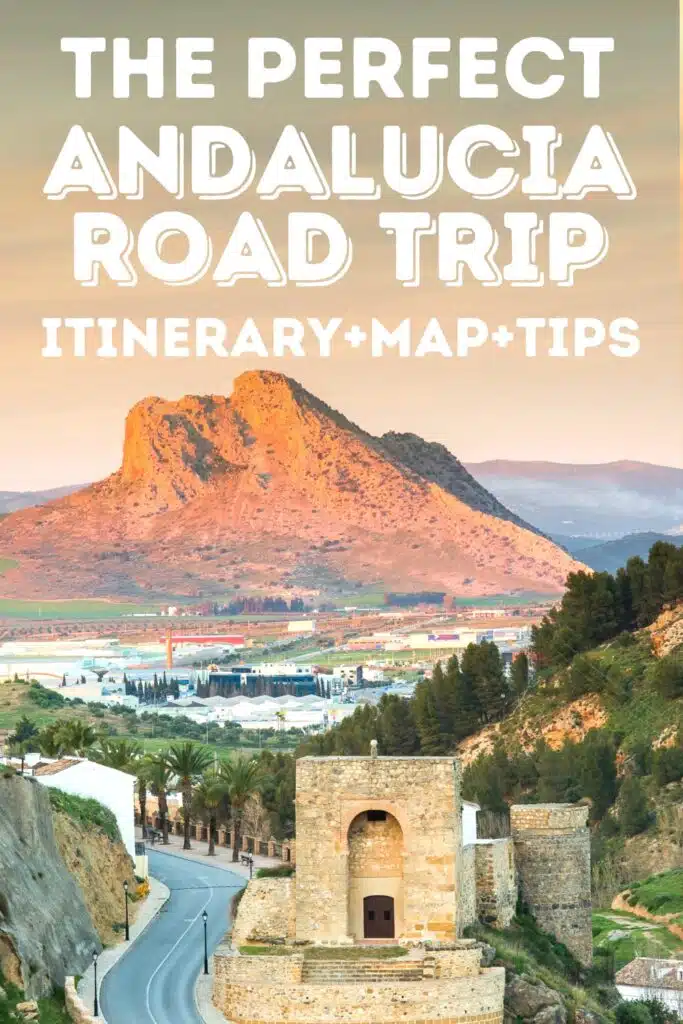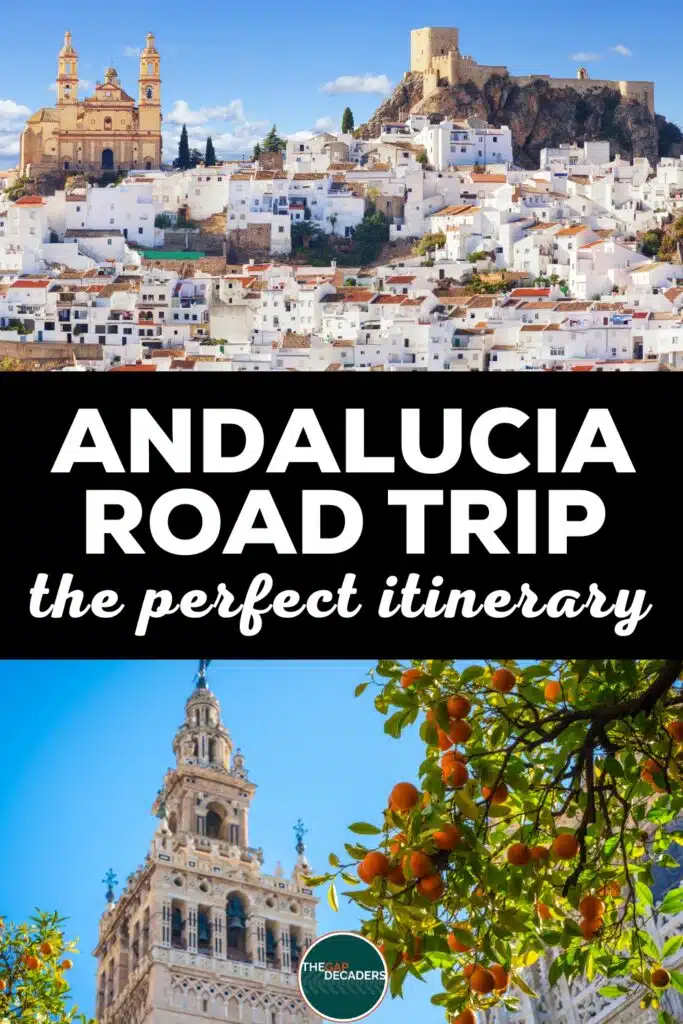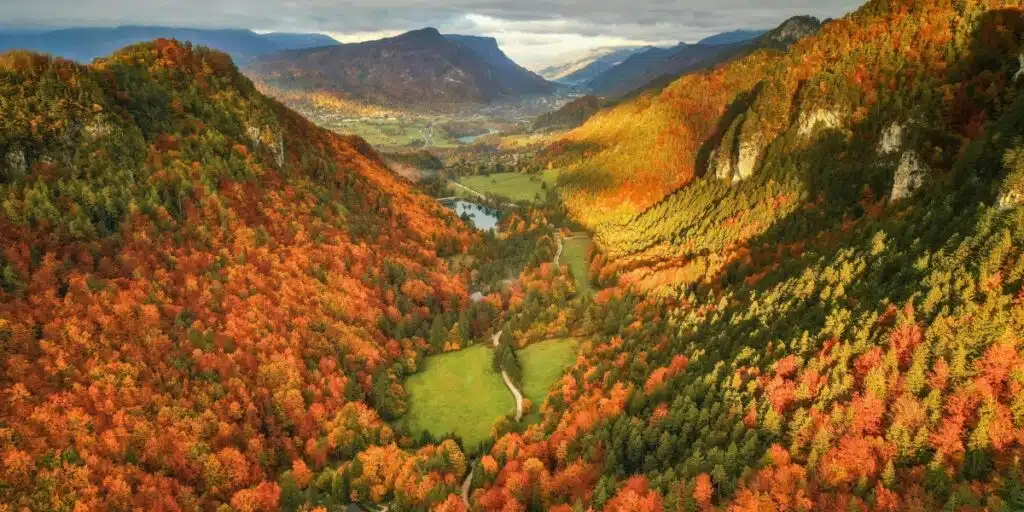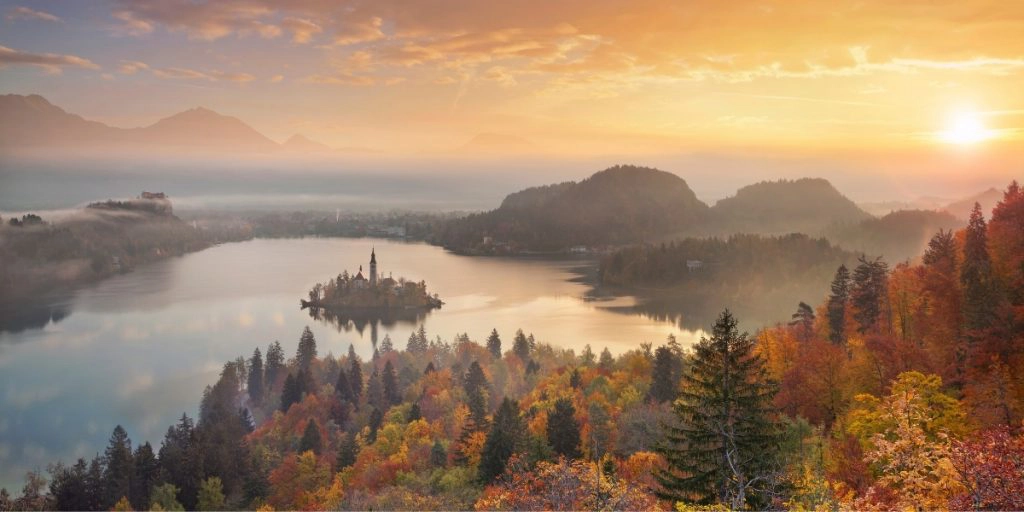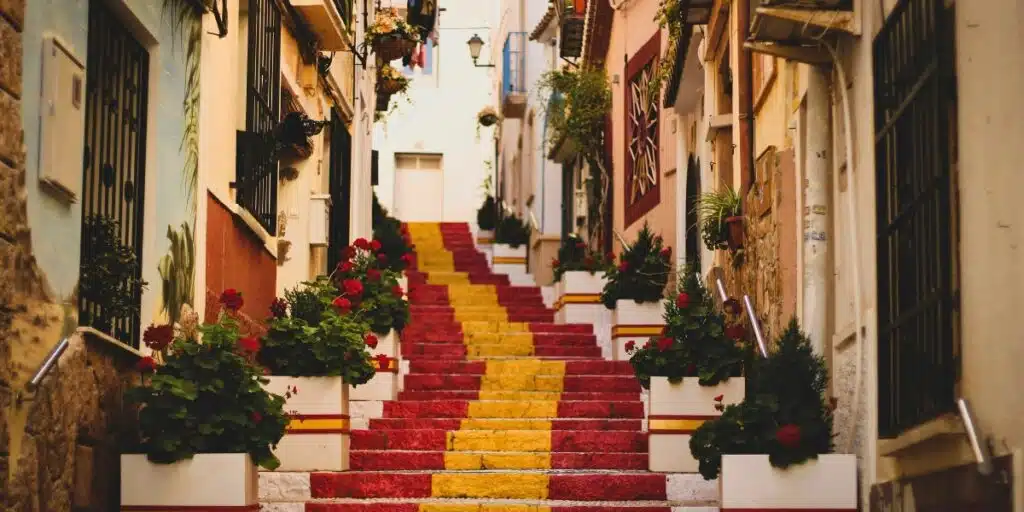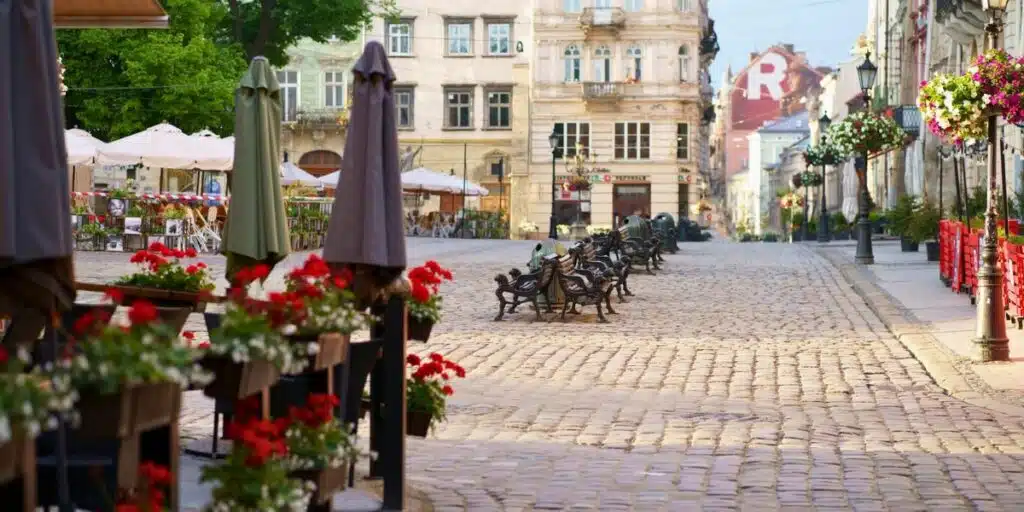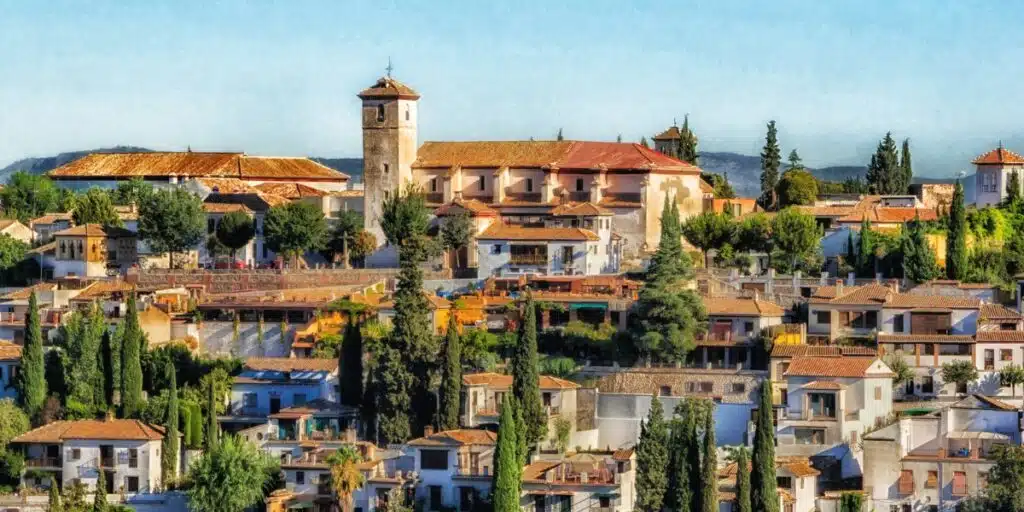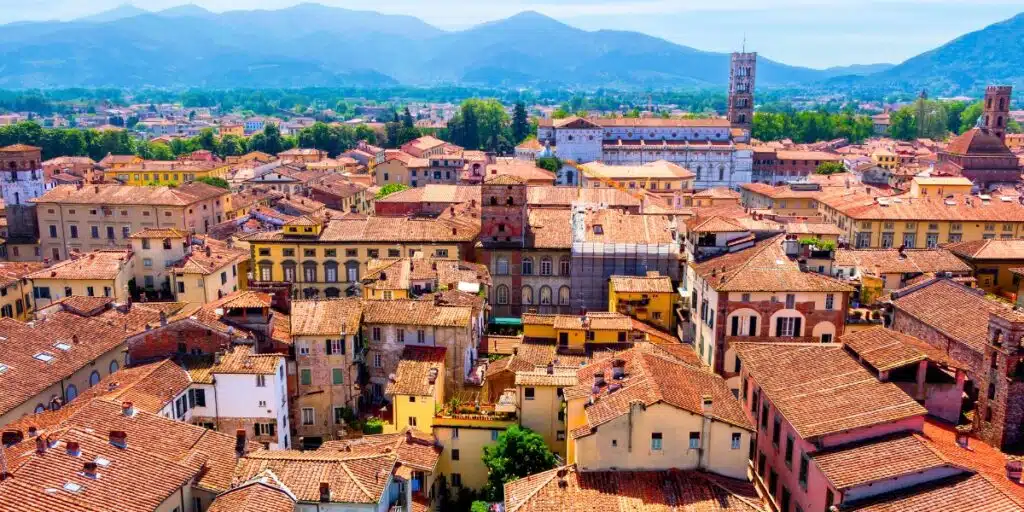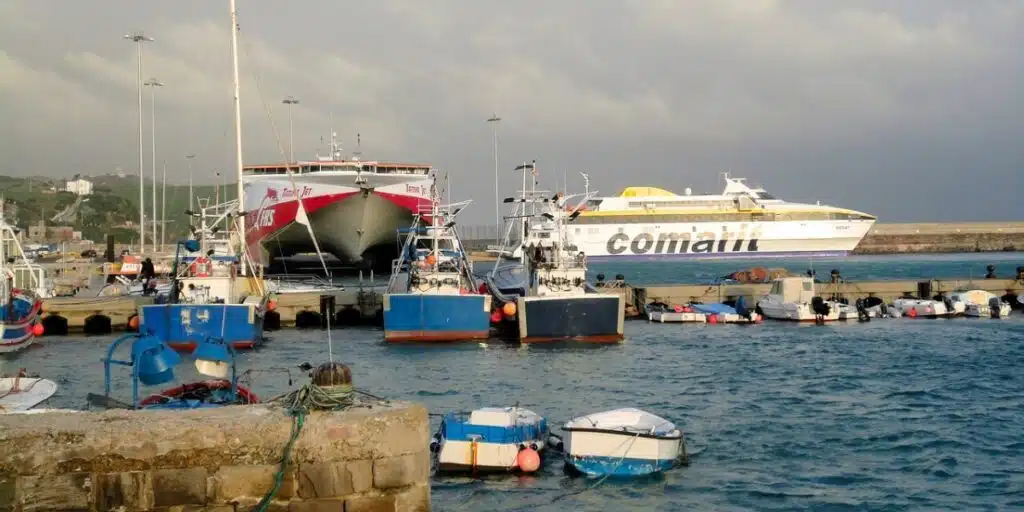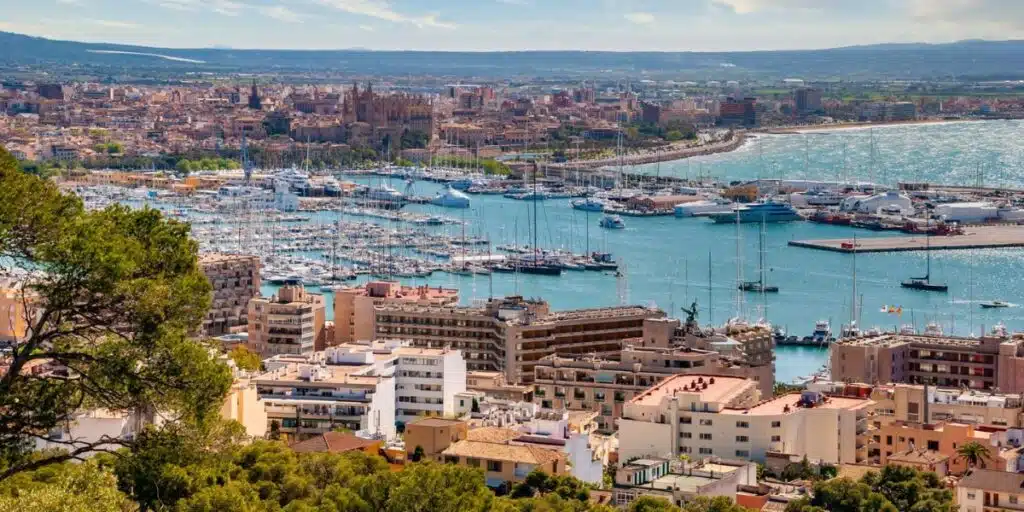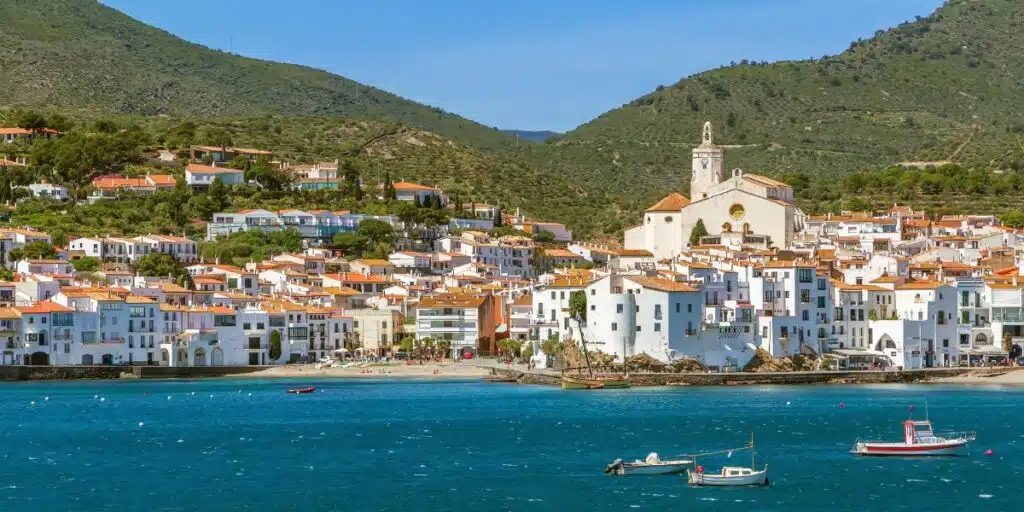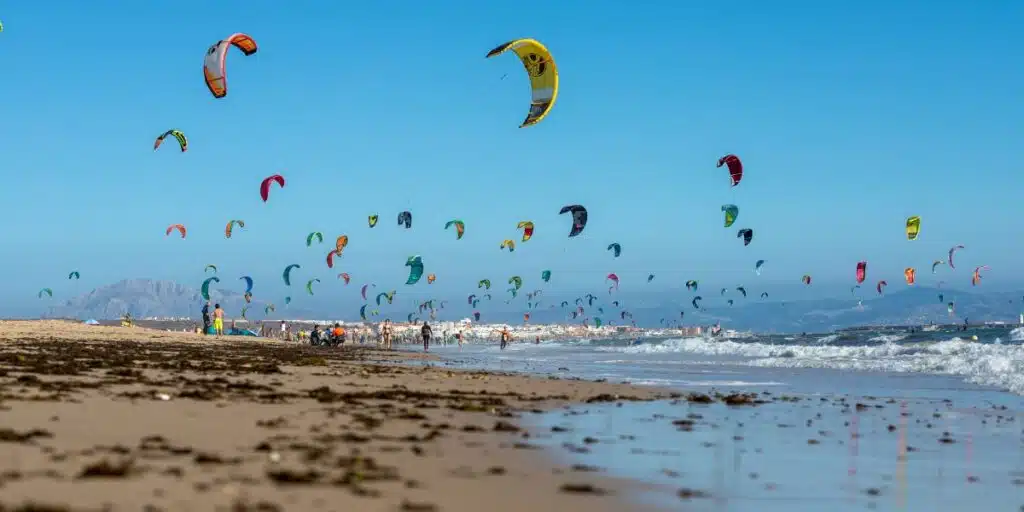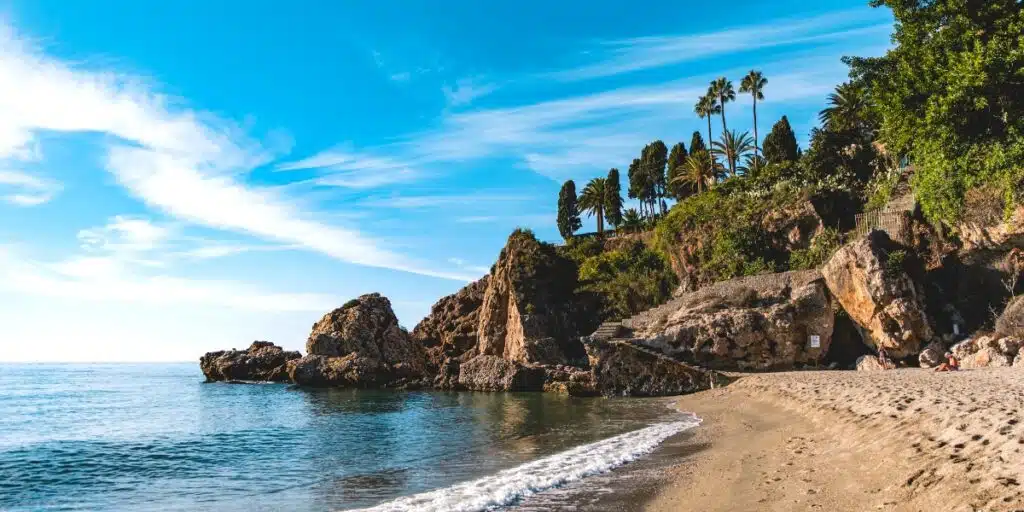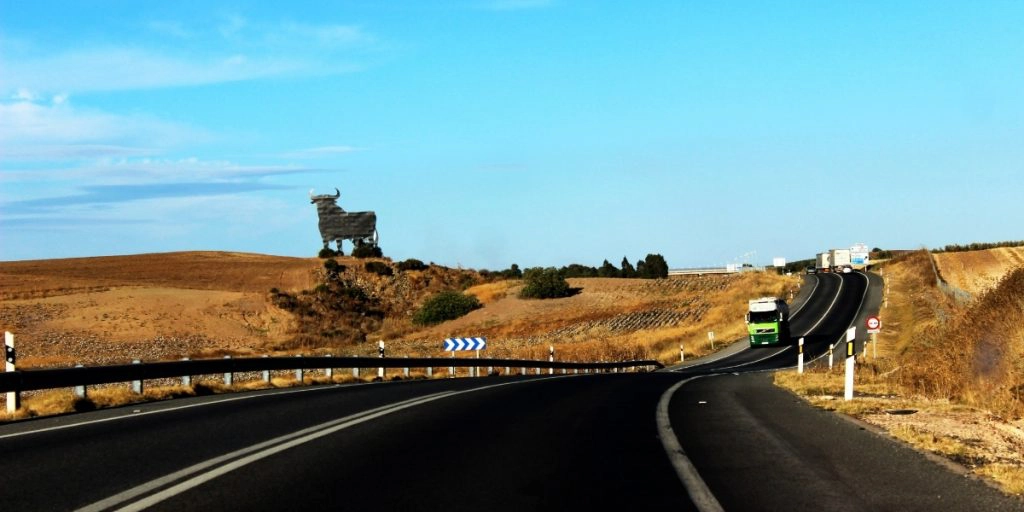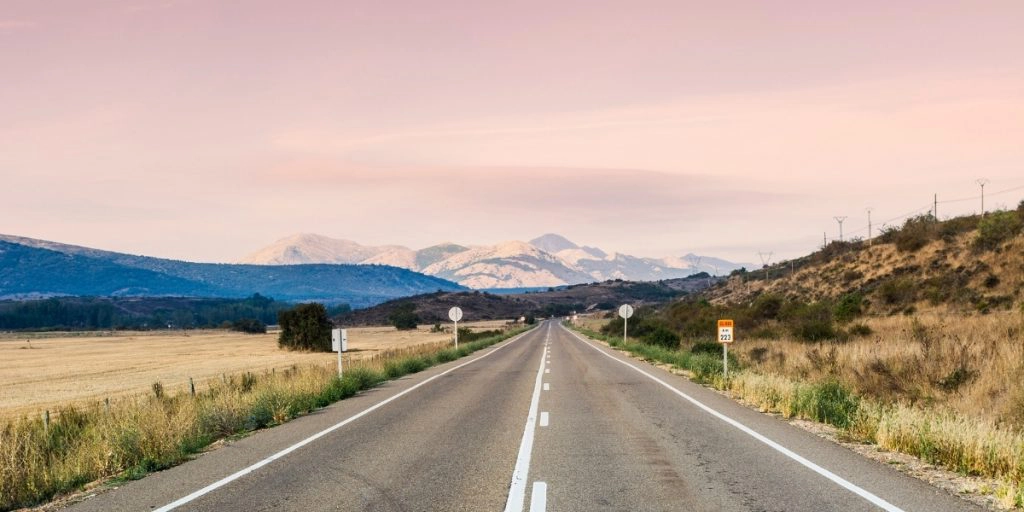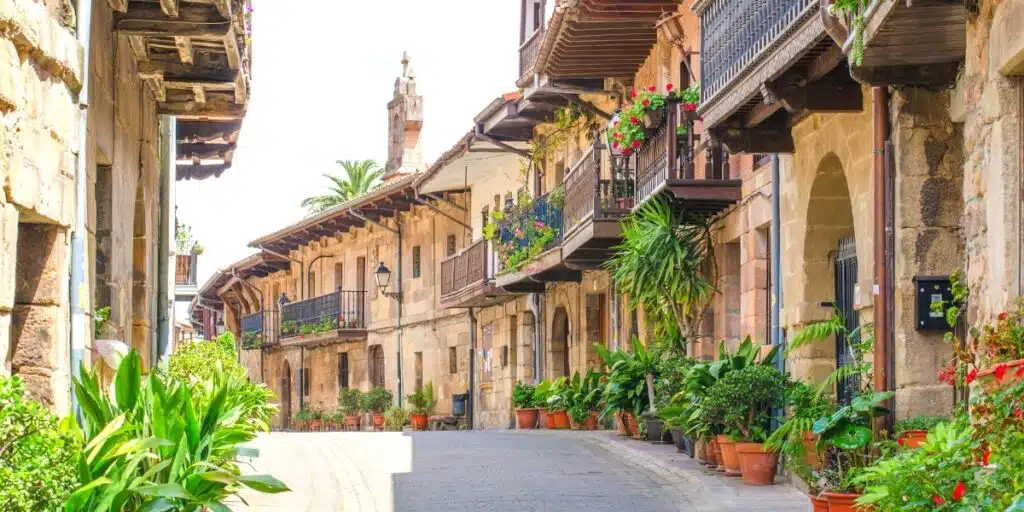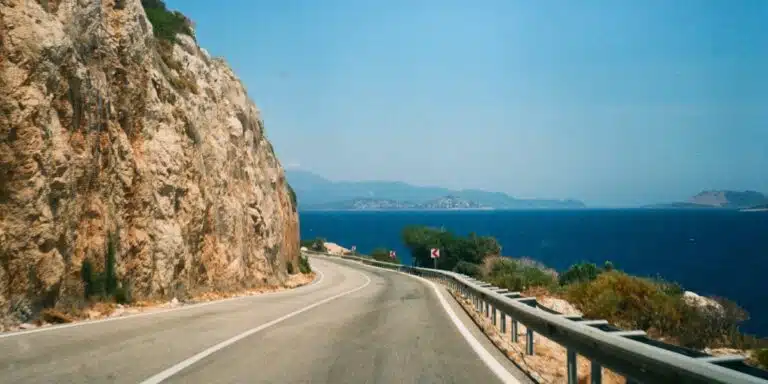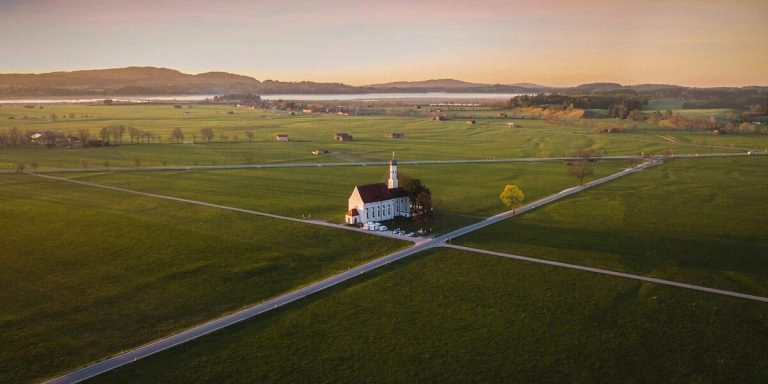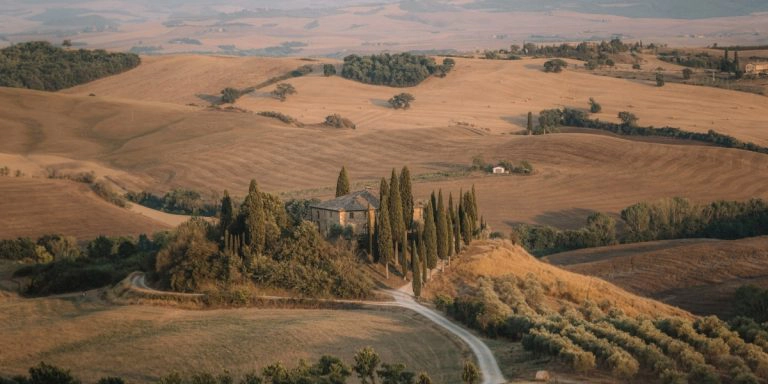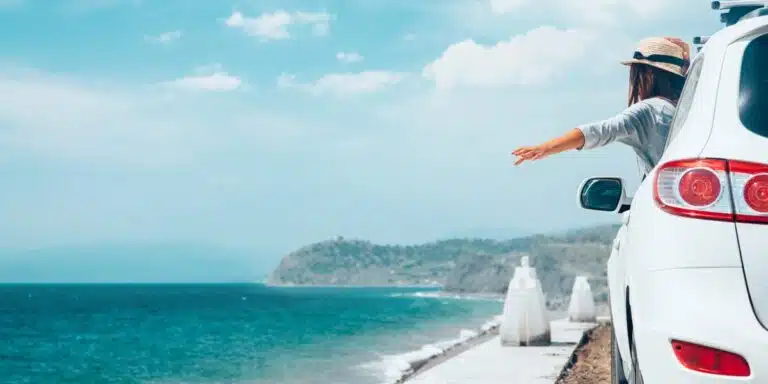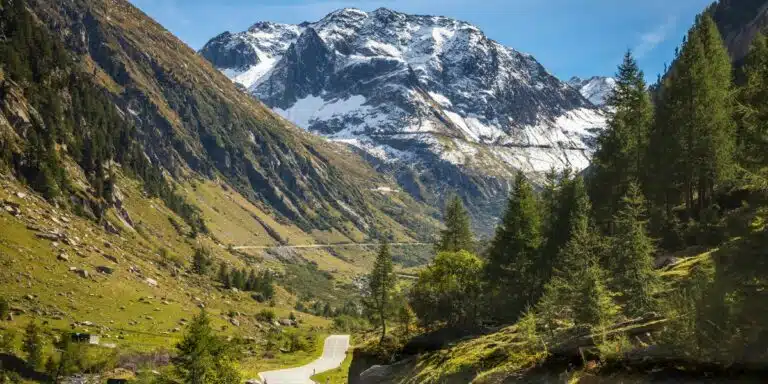This post may contain affiliate links, from which we earn an income. Click here to read our affiliate policy.
Ultimate south of Spain road trip guide
Andalucia is the beating heart of southern Spain – vibrant, soulful, and pulsating with colour. Over the past five years, we’ve returned time and again to explore the sun-soaked cities, iconic Pueblo Blancos, and rugged sierras, forging an unbreakable connection with this entrancing region.
From sizzling flamenco performances in tucked-away taverns to mouthwatering local dishes infused with centuries of Moorish influence, every corner of Andalucia bursts with passion and personality.
In this road trip guide, we’re sharing everything we’ve learned first-hand: the best driving routes linking Andalucia’s famous historic cities, off-the-beaten-path stops you shouldn’t miss, and insider tips to help you travel confidently. Let’s hit the road together and craft your own perfect Andalucia adventure!
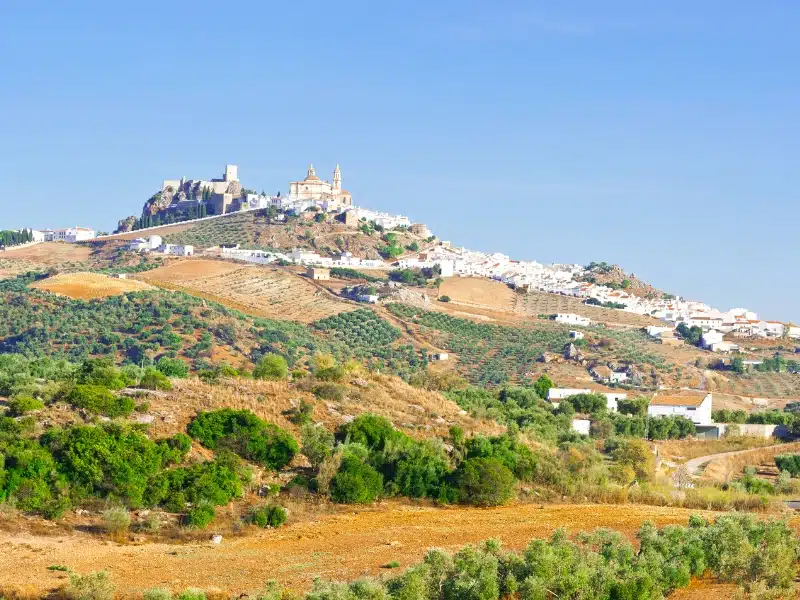
Is this your first time visiting Andalucia? Get all the information you need in our Spain Travel Guide, including what to pack, the best time of year to go, getting there, and practical Andalusia travel tips to help you have the best trip!
Where is Andalucia?
Sometimes called Andalusia (the Anglicised name), Andalucia is the southernmost autonomous community in peninsular Spain. Arguably Spain’s most famous region, Andalucia stretches from the border with Portugal in the west to the border with Murcia in the east and nearly 300 km / 186 miles north into Spain’s mountainous interior.
Andalucia has coasts on both the wild Atlantic, and gentler Mediterranean Sea and enjoys five costas; Costa del Sol; Costa de la Luz (Huelva and Cadiz); Costa Tropical, and Costa de Almería, and each has its own distinct character.
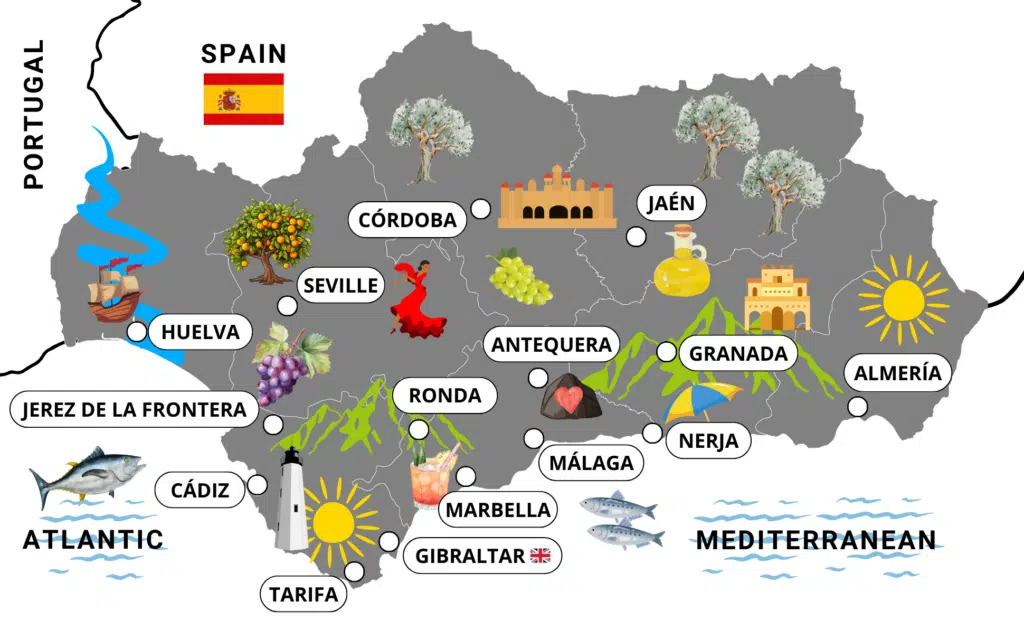
Getting to Andalucia
Whether you’re taking a road trip to Andalucia in a car, motorcycle, or campervan, self-driving is absolutely the best way to road trip southern Spain.
You can stop whenever you want, try new activities, visit places you see along the route, and have the freedom to change plans at the last minute.
Fly into Málaga-Costa del Sol Airport, the perfect place to start your roadtrip in southern Spain. With direct flights from America, Europe, and the UK, we recommend booking through Skyscanner for live deals and the best prices.
Are you planning to rent a car in Andalucia? As one of the largest car hire aggregator companies in the world, we recommend Rentalcars.com because they have massive purchasing power which enables them to secure the best car rental prices, which benefits you when you’re planning an southern Spain road trip itinerary.
For a real adventure, hire a motorhome or campervan in Spain. We recommend Motorhome Republic, an aggregate booking site who pull together all the best deals from a number of rental agencies, to offer you a wide choice of options alongside an excellent English speaking expert motorhome Concierge Team.
Andalucía Road Trip Itinerary
Malaga – Marbella – Ronda – Cadiz – Jerez de la Frontera – Seville – Carmona – Ecija – Antequera – Cordoba – Granada – Nerja – Malaga
How to use this interactive Andalucia road trip map – Use your fingers (or computer mouse) to zoom in and out. Click or touch the icons to get more info about a place, and click the arrow in the box top left to open the index. To add to your own Google Maps account, click the star next to the title of the map.
Make sure you have travel insurance you can trust when visiting Spain. We recommend True Traveller for their 5-star TrustPilot reviews, variety of cover options, best activities cover as standard, great prices, and excellent service.
Málaga
The first stop on this 10 to 14-day road trip is Malaga. Pick up your rental car or campervan at Malaga Airport, and within an hour, you’ll be at your hotel or on the road.
Malaga has lots to do with a lively city centre busy with bars, restaurants, cafés, and people. Don’t be put off by the high-rise buildings and billboards; look beyond, and you will find a charming and historic city famous for its warm welcome.
In regal Malaga’s old town, you’ll find La Alcazaba, an ancient fortress dating back to the 700s, as well as the cathedral and several pretty churches. Another must-see is the Mercado de Atarazana, one of the best fresh food markets in Andalucia. Make your way to El Bar de los Pueblos, opposite the market to the left, as you face the main entrance, for fantastic and authentic tapas.
Malaga comes to life on the seafront and is a popular place for Malaguenos to go for a stroll after siesta time, which is a fiercely protected custom in the south of Spain. Come to the seafront after 5pm and you’ll find whole families out, enjoying the sunshine and stopping for a beer and tapa along the paseo, even during the Spanish winter.
If you’re feeling energetic after all the eating, then head into the lush hills of the Montes de Malaga to the 10th-century Castillo de Gibralfaro for a great view of the city, port, and coastline. From the Alcazaba, it’s a 30-minute uphill walk – if that’s a bit too energetic, the Malaga hop-on hop-off bus also visits the Castillo.
Malaga is also the perfect base for a day trip to the stunning Caminito del Rey, the once-hidden Gorge of Gaitanes, which is deep in the hinterland. It’s a 50km trip to El Chorro, where the route takes you along suspended walkways through an impossibly narrow gorge – expect fantastic views, fascinating rock formations, and lots of other people!
We highly recommend this Caminito del Rey guided tour from Malaga, where a bus will take you to the start of the hike, and you will learn the real story behind the construction of this great work of engineering from your guide.
Our Tip: To get a taste of authentic Malaga, head to the Pedregalejo district, where you will find freshly caught grilled seafood being served from chiringuitos on the beach late from late afternoon into the night.
Andalucia Itinerary 7 Days Option
If you don’t have much time, here is where you switch up the itinerary and take a Malaga to Seville road trip. From Seville head to Cordoba and then Granada, for a shorter Andalucia trip itinerary.
Where to Stay in Malaga
Upmarket: Stay at Vincci Selección Posada del Patio for its five-star location in central Málaga, historic decor, and rooftop pool.
Mid-Range: Stay at Molina Lario for its four-star location in central Málaga, stylish modern design, and a rooftop terrace with panoramic city views.
Budget: Stay at Debambú Atarazanas for its prime location beside Málaga’s vibrant market, chic modern apartments, and easy access to the city’s top attractions.
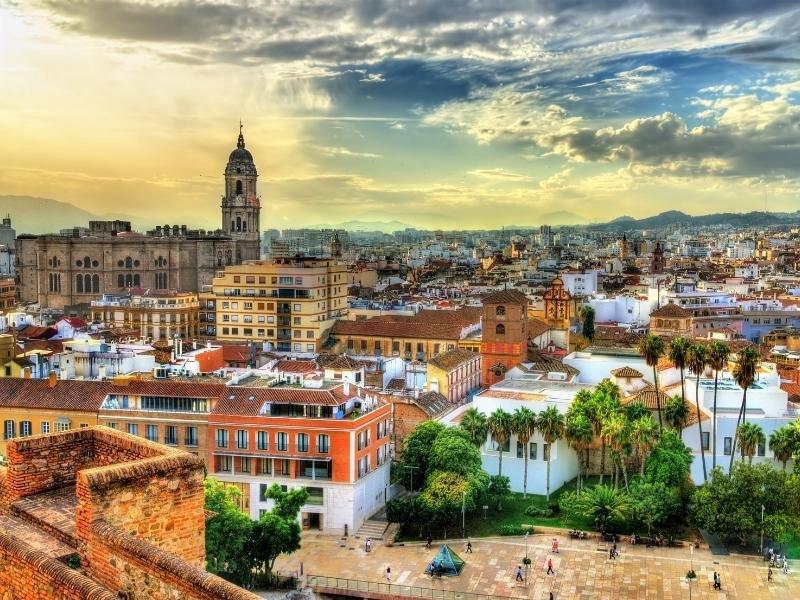
Don’t forget your road trip essentials! Our free road trip checklists help you remember everything, including road trip snacks, podcasts, and road trip songs for the journey!
Marbella
In Marbella, spend a day soaking up the sun on one of the three immaculately kept beaches and enjoying the people-watching. The days of big celebrities here are long gone, but there is still a touch of glitz and glamour to enjoy.
Visit the charming old town and head for Plaza de los Naranjos at the centre of the Casco Antiguo. Enjoy a coffee while watching the world go by, or head to the artisan boutiques and upmarket shops surrounding the pretty square.
Or, if you like things organized for you, enjoy this highly-rated guided walk of Marbella’s historic centre, where you get to try traditional tapas, local wine, and olive oils as you go.
Our Tip: For lunch, find Taberna Casa Curro Marbella for freshly homemade tapas and fruity Spanish wine.
Andalucia Itinerary Three Week Option
If you have a few extra days, add to your Costa del Sol road trip by staying on the coast road and enjoying the lively towns and beaches, until you reach Estepona. From here you can head north and explore Andalucia off the beaten track, through the stunning Natural Park Los Reales de Sierra Bermeja, to reach Ronda.
Where to Stay in Marbella
Upmarket: Stay at Nobu Hotel Marbella for its exclusive adults-only vibe, world-class dining, and prime location near the beach and nightlife.
Mid-Range: Stay at Amare Beach Hotel for its prime waterfront location, sleek adult-only ambience, and a stunning rooftop bar with panoramic sea views.
Budget: Stay at Ona Alanda Club Marbella for its convenient location on the Costa del Sol, well-equipped self-catering apartments, and relaxed family-friendly vibe.
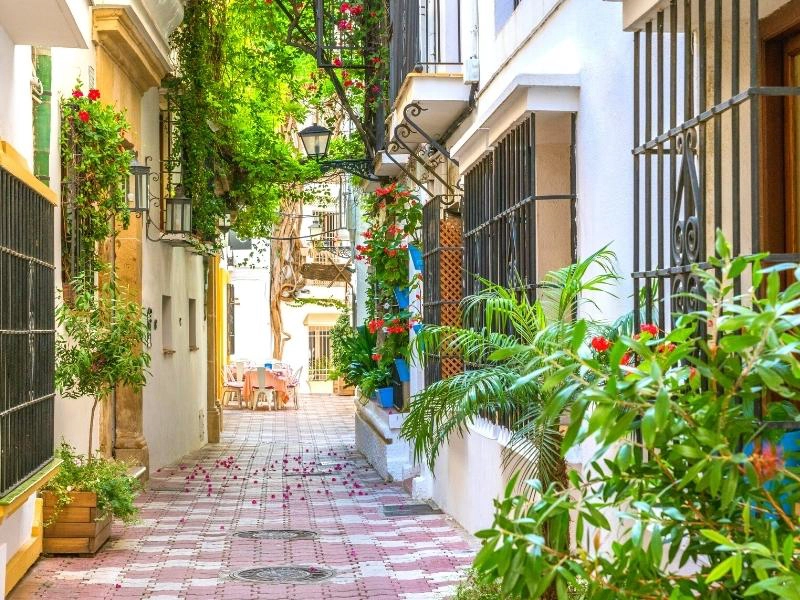
Want to plan your own road trip? Get our step-by-step road trip planning guide to help you organize the perfect trip or check out our favorite road trips in Europe for inspiration!
Ronda
The drive from Marbella to Ronda is stunning, one of the best during this road trip in Andalucia. Situated between the natural parks of the Sierra de Grazalema and the Sierra de las Nieves, Ronda sits in a bowl surrounded by dramatic mountains.
Ronda is divided by the huge 120m deep El Tajo Gorge, which is spanned by the stunning arched bridge of Puente Nuevo. The bridge is best seen from the beautiful La Casa del Rey Moro, where you’ll find lush and fragrant gardens and a spectacular view. For a more exciting view, tackle the vertical walls of the Tajo del Ronda using the via Ferrata route with a guide!
Bull-fighting is a divisive sport, but a passion of the Spanish people, and the Plaza de Toros bullring in Ronda is architecturally spectacular. It’s interesting to learn the history of the corrida in the well-laid-out and informative museum.
Understanding Spaniards’ love and admiration for the matadors’ courage and showmanship is key to understanding their love of bullfighting.
From Ronda, you are ideally situated to take day trips to the iconic Pueblos Blancos or White Towns in the surrounding mountains, where you’ll find some of the best and most beautiful of the small villages.
Just north of Ronda are two such white villages: Zahara de la Sierra and Setenil de las Bodegas. Both are worth visiting, and the latter is known for its whitewashed houses built into the surrounding cliffs and that famous image, the one with the huge rock covering half the narrow street and its houses.
Our Tip: For a spectacularly scenic drive from Ronda, set your sat nav for Zahara de la Sierra and then pick up the twisting CA-9104 road to the tiny village of Grazalema, which climbs to the Puerto de Las Palomas (Pass of the Pigeons), at 1180m it’s a spectacular drive and worth the fuel to get there! From Grazalema, pick up the A-372 across the Sierra de Grazalema Natural Park to Arcos de la Frontera, and from there, the A-382 and E5 to Cadiz.
Where to Stay in Ronda
Upmarket: Stay at Molino Del Santo for its charming riverside setting, authentic Andalusian hospitality, and convenient access to the region’s stunning natural beauty.
Mid-Range: Stay at Catalonia Ronda for its prime location near Ronda’s iconic bullring, contemporary interiors, and a rooftop pool with panoramic views of the dramatic Tajo Gorge.
Budget: Stay at Hotel Sierra Hidalga for its peaceful hillside location, panoramic mountain views, and easy access to Ronda’s historic sights.
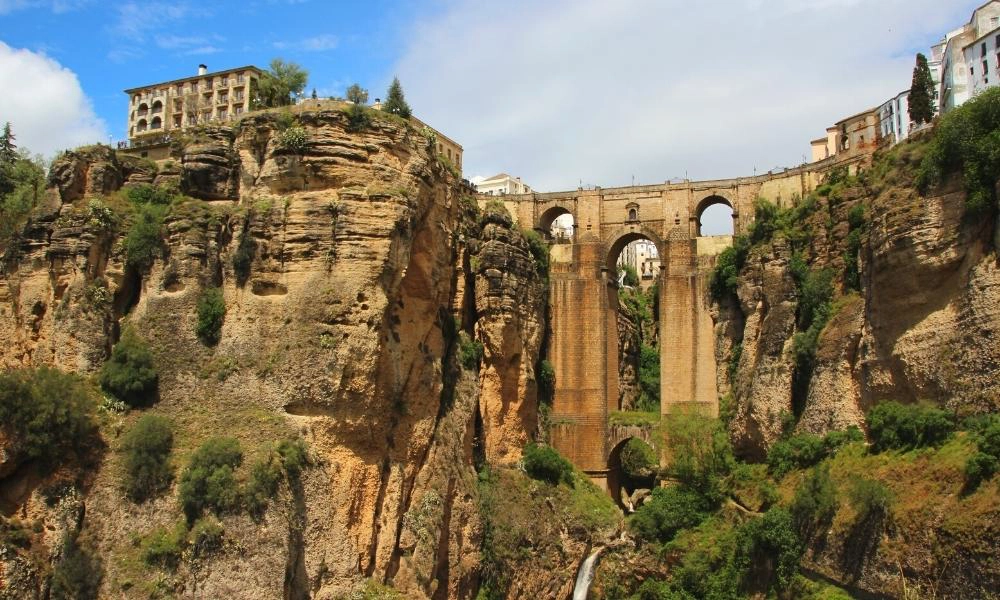
Looking for the best SIM card deals in Europe for your trip? Check out our guide to the best data SIMs in Europe and get the best deal for your trip to Spain.
Cadiz
The famous faded splendour of the sea city of Cadiz is caused by the effect the sea air has on its architecture, leading to the facades of buildings crumbling and bleaching.
This imbues Cadiz with a sombreness that contradicts the city’s true character. In fact, Cadiz is known for its party vibe, especially during carnival, one of the naughtiest in Spain!
Almost completely surrounded by the waters of the Atlantic Ocean, Cadiz is a fabulous city for simply wandering and soaking up the ambience. Narrow buildings with painted facades, twisting back streets, pretty flower-filled squares, and a few fabulous churches await you.
Take a guided tour of medieval Cadiz and see all the city’s landmarks, including the Neoclassical and Baroque cathedral and its museum, the Roman theatre in the area known as the Pópulo, and structures dating back as far as the Phoenician era.
Head out for food, and you’ll find it’s all about fish! Whether you fancy picking your fish and having it cooked for you at Mercado Central de Abastos, or you’re looking for a plate of fabulous fresh tapas for dinner with a fino sherry or locally caught seafood, you’ll find it in Cadiz.
Our Tip: End the day by watching a perfect sunset from Playa de la Caleta, situated right in the old town.
Where to Stay in Cadiz
Upmarket: Stay at Hotel Monte Puertatierra for its prime coastal setting near the beach, modern comfort, and easy walking distance to the city’s historic centre.
Mid-Range: Stay at Hotel Casa de las Cuatro Torres for its exquisitely restored 18th-century architecture, boutique charm, and prime location overlooking Cádiz’s picturesque bay.
Budget: Stay at Casual con Duende for its playful, flamenco-inspired decor, comfortable rooms, and central location perfect for exploring the vibrant local scene.
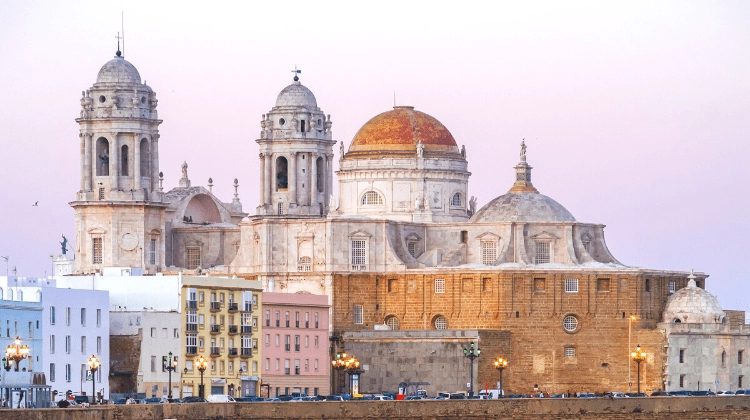
Costa de la Luz Side Trip
If you have extra time, Cadiz is a wonderful halfway base for a few days. Explore more or take a day trip to the aptly named Costa de la Luz, which extends south to Tarifa, the most southern point of mainland Europe, and north to the port city of Huelva.
Off the beaten path to the south are beautiful beaches dotted with chiringuitos serving locally caught fish, pretty white villages like Vejer de la Frontera, quietly unassuming yet packed with history and architectural gems, and the fabulous Cape Trafalgar, the site of the 1805 naval Battle of Trafalgar, in which the British Royal Navy commanded by Admiral Horatio Nelson decisively defeated Napoleon’s combined Spanish and French fleet.
Head north for Christopher Columbus history in La Rábida, where you can see life-sized replicas of the ships he sailed across the Atlantic for the New World (and they are tiny) and the Monasterio de Santa María de la Rábida, where the explorer stayed as he was preparing for the trip.
RELATED POST: Tarifa Guide: Best Things to Do + Top Visitor Tips
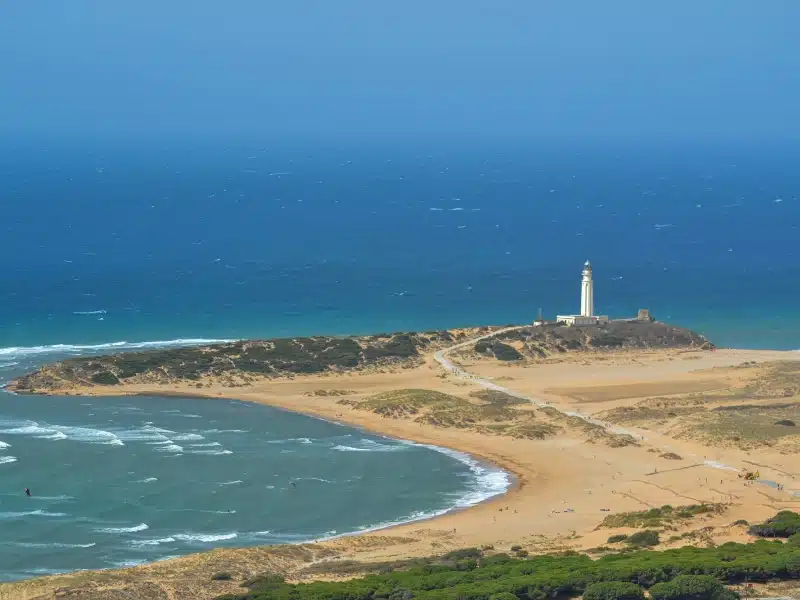
Spain Travel Ideas
Jerez de la Frontera
Jerez de la Frontera has been the home of sherry since the 14th century. The particular local soil, climate, and grape variety combine to create this complex and often delicious fortified wine, which can only be produced in the so-called ‘sherry triangle’, which holds the Denominacion de Origin of Jerez y Sanlúcar de Barrameda.
The nearby towns of Sanlúcar de Barrameda and El Puerto de Santa María are the other points of the triangle, which the Atlantic Ocean, the majestic Guadalquivir River, and the beautiful Cádiz Sierra mountains border.
All sherry is made from three green grapes only: Palomino, Moscatel, and Pedro Ximenez. The wine is aged and blended using a system called solera y criadera, a process for ageing liquids by fractional blending so that the finished product is a mixture of ages. There are some sherry bodegas with soleras dating back hundreds of years, so with every sip you’re drinking a little bit of history.
You cannot go to Jerez without visiting a bodega and taking a tour with a tasting session at the end to understand how this often misunderstood drink is created. Be prepared, though – there are seven types of sherry ranging from the very dry Fino to the sticky sweet Pedro Ximenez, my favourite!
As well as sherry, Jerez is also famous for its flamenco tradition. Flamenco literally means ‘hell-raising’, and when you watch this steamy and seductive dance, you’ll understand why!
Considered an art form in Spain, you’ll find flamenco clubs aplenty in the narrow streets of the Barrio de Santiago quarter. However, booking a live flamenco show in advance is probably easier. Instead of getting lost in the narrow, twisting alleys looking for a bodega, you’ll have the best seats in town!
Where to Stay in Jerez de la Frontera
Upmarket: Stay at Hotel Bodega Tio Pepe for its unique location at the iconic Tio Pepe bodega, refined Andalusian style, and immersive wine-tasting experiences just steps from the historic city centre.
Mid-Range: Stay at Villa Jerez for its tranquil garden setting, local decor, and proximity to Jerez’s centre.
Budget: Stay at Suites Alfonso X for its central location near Jerez’s historic heart, stylish modern suites, and easy access to the city’s top attractions.
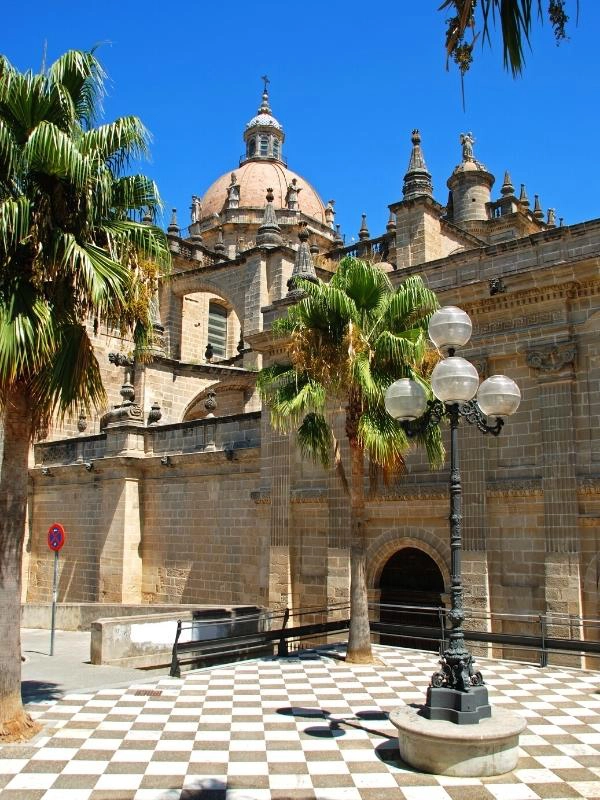
Are you looking for more Spanish road trips? Get the best itineraries to see northern Spain and the cities of Barcelona, Valencia & Madrid in our guide to the best road trips in Spain.
Seville
The Andalus capital of Seville is a gloriously beautiful city and is just as you expect it to be. Hot, passionate, loud, and colourful, this city is unashamedly flamboyant. And it just happens to be our favourite place in Spain.
In the old town, you’ll find three of Seville’s best attractions: Seville Cathedral’s Gothic splendour, the imposing Giralda Tower, and the stunning Alcazar. We highly recommend you visit all three for a real taste of Seville’s fascinating history.
The UNESCO Seville Cathedral or Santa Maria de la Sede, occupies the original site of the great Aljama mosque, built in the late 12th century. The only remaining parts are the Patio de Naranjas, the Puerta del Perdon, and the Giralda Belltower, which was formerly the minaret.
The largest Gothic cathedral in the world, as well as the world’s third largest church, the spectacular Seville Cathedral, is home to the tomb of Christopher Columbus, who set sail for the New World from Huelva, a city and province of Andalucia that abuts Portugal.
Havana, Cuba, and Santo Domingo in the Dominican Republic all claim to hold the remains of Cristobal Colon, as he is known in Spain, but recent DNA tests proved beyond doubt that this tomb is the final resting place of the great explorer, who died in poverty in Valladolid in 1506.
The Royal Alcazar of Seville is a stunning historic royal palace, formerly the site of the Islamic-era citadel of the city, it was first constructed in the 10th century and then developed into a larger palace complex by the Abbadid and Almohad dynasties. After the Castilian conquest of the city in 1248, the Alcazar was rebuilt and replaced by new, richly decorated Mudéjar-style palaces built by Pedro I during the 1360s.
Just south of here in the Parque de María Luisa is the lively Plaza de España which was built in 1928 for the Ibero-American Exposition of 1929.
With half a mile of tiled fountains and pavilions lushly planted with palms, orange trees, Mediterranean pines, and stylized flower beds, Plaza de Espana is a great place to wander and people-watch as you take a boat out on the small lake, catch some live flamenco and Spanish guitar, or admire the beautifully tiled alcoves, each representing a different province of Spain.
Right next to the old town, you’ll find the narrow alleys of the Barrio Santa Cruz, the heart of Seville’s lively tapas culture offering some of the best plates in Andalucia.
Sevillanos eat their tapas standing at the bar with a small beer or sherry, but why not take a seat and watch the world go by to make the most of the atmosphere on the streets? Go slowly, though; you could easily spend a small fortune on plate after plate of delicious tapas!
In the busy shopping streets of the Centro quarter to the north, you’ll find the contemporary Metropol Parasol, a huge wooden structure that is reported to be the largest in the world. This gorgeous wooden structure is shaped like a fluid parasol and shades much of the square in which it stands.
At the top of the viewing platform, you can admire its form and design while enjoying fantastic Seville city centre rooftop views.
For more travel tips and information check out this one day in Seville itinerary or book an e-bike tour of Seville with a local guide, it’s a great way to see the city!
Our Tip: Over 40,000 orange trees line the streets of Seville, and the fragrance of azahar (orange blossom fills the air in spring. If you visit in winter, you’ll see the fruit dropping to the pavements, free for people to pick up. But don’t try eating one, these are sour Seville oranges used to make bitter marmalade, and they taste pretty disgusting!
Where to Stay in Seville
Upmarket: Stay at Hotel Casa Del Poeta in Seville for its atmospheric setting in the heart of the Santa Cruz neighbourhood, romantic Moorish courtyards, and intimate boutique ambience.
Mid-Range: Stay at Hotel Rey Alfonso X for its central location in Seville’s historic quarter, contemporary Andalusian style, and a rooftop pool offering captivating city views.
Budget: Stay at Zenit Sevilla for its riverside Triana location, stylish contemporary rooms, and a rooftop pool boasting sweeping city views.
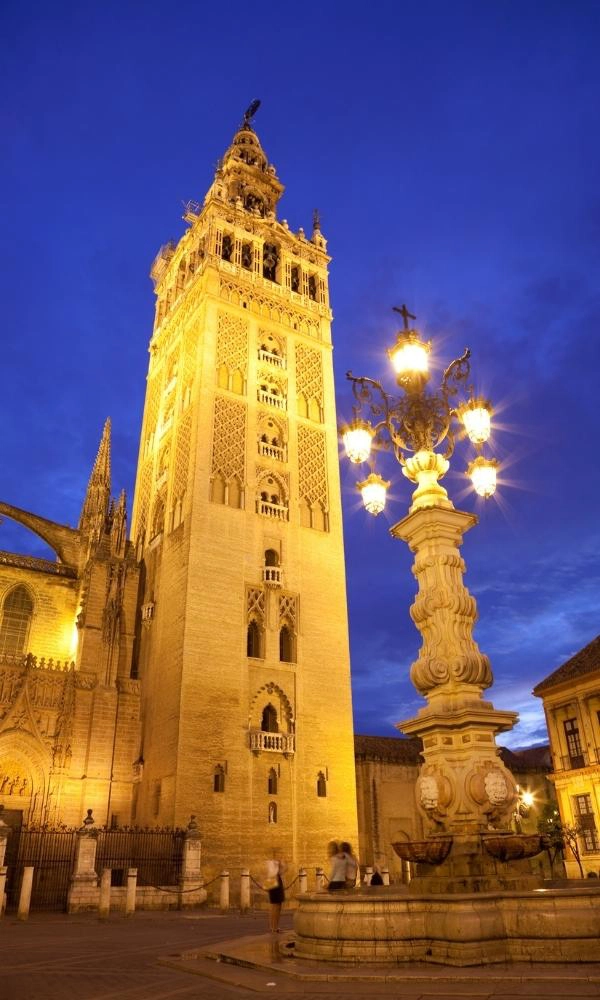
Carmona
From Seville, head towards your next stop of Carmona, nestled in the hills and olive groves between Seville and Cordoba, and one of the oldest towns in Europe.
The main attraction is the Roman ruins a short drive west of Carmona. These ancient ruins comprise a 1st-century amphitheatre and the Roman burial ground, the Necropolis Romana.
The Necropolis was discovered and excavated in the 19th century and holds several tombs and family mausoleums from the 1st Century BCE to 2 CE. There is also a small museum on site.
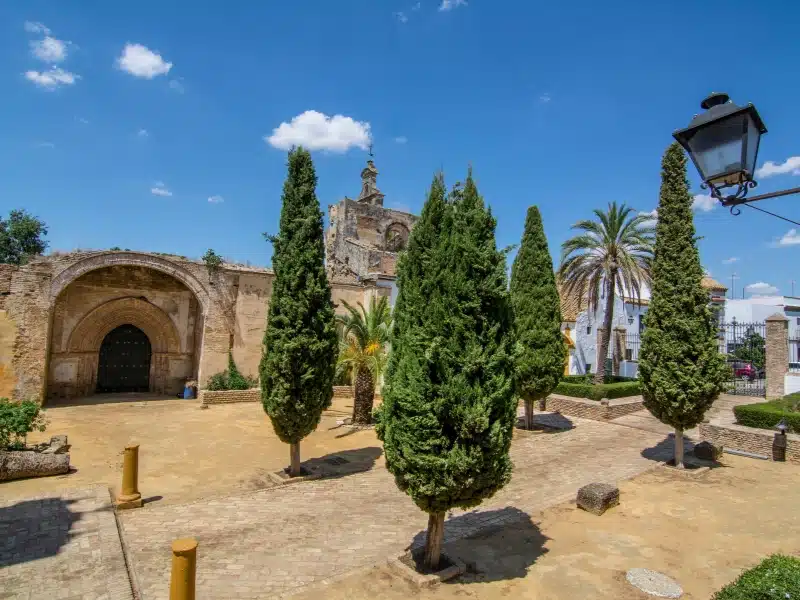
Écija
About 30 minutes after leaving Carmona, stop at the small town of Ecija. This was a Roman city that later became Visigoth and Moorish before being reconquered by the Castilian king Ferdinand III in 1240 when it became Christian.
Ecija has plenty of monuments of interest, such as the Palaces of Benameji, Peñaflor, Valdehermoso, Palma, and Santaella, seven convents dating from the 16th to 18th century, and six churches!
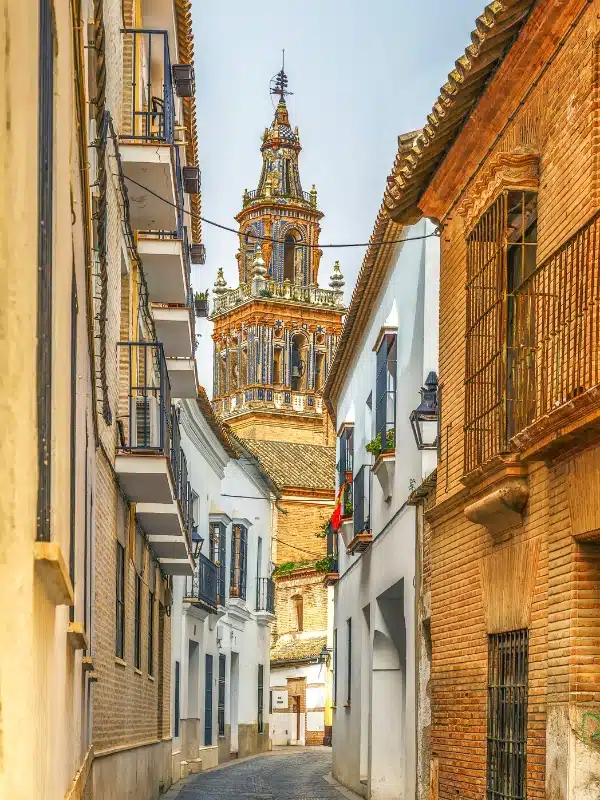
Córdoba
Rich in history and Moorish architecture, Cordoba is an intimate and atmospheric city, most famous for the ancient Mezquita (mosque-cathedral).
La Mezquita is a remarkable building, the result of a mosque built well over a thousand years ago and added to numerous times before being consecrated as a Catholic cathedral in 1248 by the conquistadors who freed Spain from the rule of the Moors in the same year.
The result is an eclectic mix of Moorish and Renaissance architecture that blends to create a cathedral unlike any other in the world and is the one place you must visit in Cordoba.
Take a Mezquita guided tour with skip-the-line tickets to fully appreciate the history of this incredible building, and if you can, book a slot to climb the bell tower at sunset; the views are really spectacular.
The gardens of the Alcazar provide contrast and relief from the, at times, overwhelming Mezquita. With sparkling water, tall palms, and cypress trees, this is a perfect spot to stop for an hour or so before taking a stroll across the beautiful Roman Bridge, thought to be built in the 1st or 2nd century, for a fabulous view of the old town.
Meander through the Jewish Quarter, where you’ll find narrow lanes and pretty squares. Many of the whitewashed houses are covered in blooms from window boxes filled with colourful trailing geraniums in summer, providing the perfect images of this gorgeous city.
Our Tip: Don’t go out for dinner until at least 9pm, or you’ll be eating in an empty restaurant with no ambience at all! Make sure to try a Fitifiti after dinner. A mix of sweet dessert wine like sherry or local montilla mixed with white wine, this is a popular digestif in Cordoba.
Where to Stay in Cordoba
Upmarket: Stay at Las Casas de la Judería for its authentic location in the historic Jewish Quarter, charming Andalusian courtyards, and easy walking distance to the iconic Mezquita.
Mid-Range: Stay at Balcón de Córdoba for its breathtaking rooftop terrace with panoramic city views, intimate boutique charm, and prime location just steps from the Mezquita.
Budget: Stay at La Boutique Puerta Osario for its contemporary design, cosy ambience, and a prime location within walking distance of Córdoba’s historic attractions.
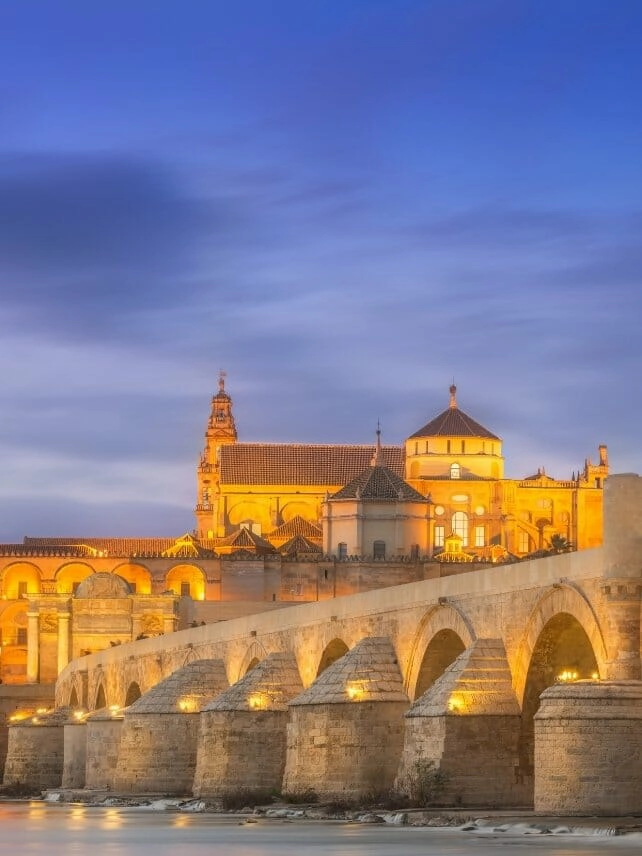
Jaén Side Trip
Well off the beaten path and a 90 minute long drive from Cordoba, Jaén hosts a cultural heritage and diverse architectural legacy that reflects the coexistence over centuries of three major cultures: Christian, Jewish, and Moorish.
Jaén’s historic Jewish quarter is a tapestry of pretty squares, remarkable historical churches built on top of old mosques, palaces, and Arabian baths, scattered with bars and restaurants. The Cathedral is an architectural jewel of the Spanish Renaissance and the Castillo de Santa Catalina, which overlooks the city and can be seen from anywhere, is another architectural gem that offers extraordinary views of the city and the surrounding areas.
Jaén is perhaps best known as the world capital of olive oil. As the largest producer of this precious liquid gold, the city’s traditional cuisine is always prepared with extra virgin olive oil, and Jaén-style Mediterranean cuisine can be enjoyed in the restaurants, taverns, and tapas bars of the city.
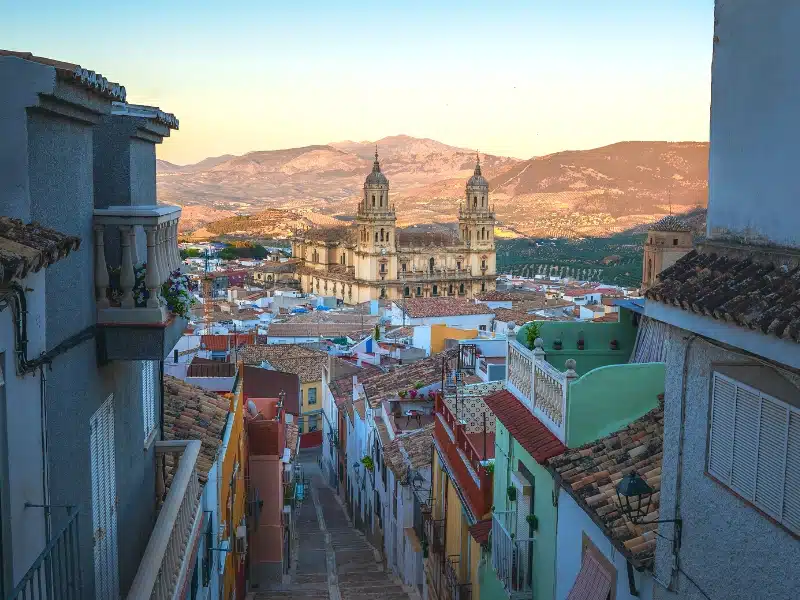
Antequera
As you head to Granada, stop in Antequera, deep in the heart of Andalusia, home to over fifty monuments and archaeological sites of extraordinary importance.
The Antequera Dolmens have been declared a UNESCO World Heritage Site in recognition of their fine quality and exceptional state of conservation. A fascinating example of megalithic construction, the Menga Dolmen is six thousand years old and is an enormous passage tomb formed by huge slabs of rock that lead to the burial chamber. The Viera Dolmens and El Romeral complete the prehistoric ensemble.
When you visit the Dolmens, you can look northeast to the limestone crag of Peña de los Enamorados or Lover’s Rock, which resembles a prone fave. Legend has it that two star-crossed lovers ran away together and were chased by Moorish soldiers to the top of the rock, where, rather than renounce their love or be captured, they chose to hurl themselves over the edge, holding hands.
Our Tip: Time your visit for 21st June, the summer solstice, when the sun rises over the peak of the Lover’s Rock and shines directly into the Menga dolmen.
Where to Stay in Antequera
Upmarket: Stay at Convento la Magdalena Hotel in Torcal de Antequera Natural Park for its tranquil 16th-century convent setting, stunning mountain views, and convenient access to the park’s dramatic limestone landscapes.
Mid-Range: Stay at Parador de Antequera for its contemporary design, hillside location boasting panoramic views, and easy access to the region’s rich cultural heritage.
Budget: Stay at Los Dólmenes for its proximity to Antequera’s ancient dolmens, scenic countryside views, and comfortable, welcoming atmosphere.
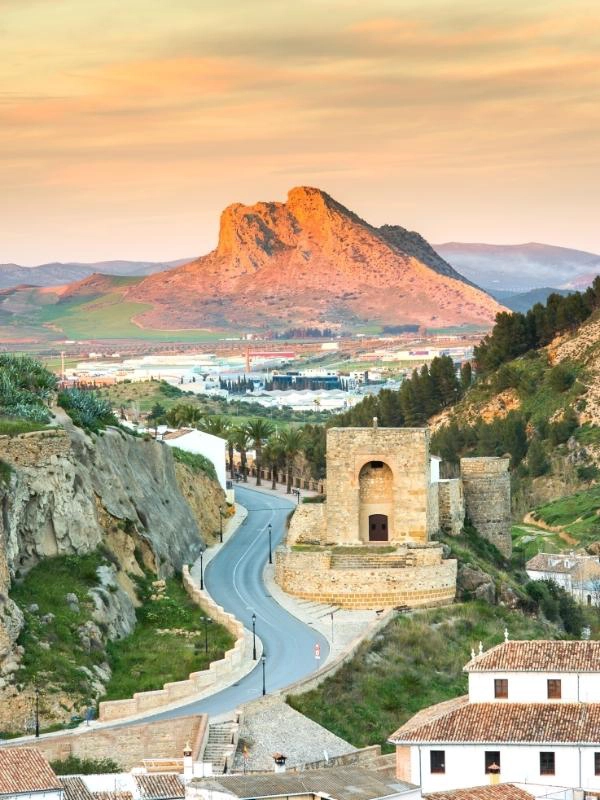
Granada
In the spectacular Sierra Nevada mountains, Granada is all about the Alhambra Palace and is one of Spain’s most romantic cities. This spectacular Moorish palace sits high on a hill overlooking the surrounding countryside and is the jewel in Andalucia’s crown as well as being one of the most beautiful places in Spain.
The Alhambra is simply breathtaking in its beauty, with typical Moorish symmetry and beautifully proportioned rooms full of intricate detail and tile work. The Nasrid Palaces of opulent Moorish-style courtyards, reception halls & royal quarters, and the shaded and leafy gardens with running water, secret paths, and beautiful planting to excite the senses are both must-sees.
Book your Alhambra tickets and guided tour well in advance (unless you’re visiting Granada in winter when everywhere will be a little quieter) as the Alhambra Palace is one of the most popular attractions in the whole of Spain.
Alternatively, get a Granada Card which allows you to book Alhambra tickets in advance and also covers public transport and other important monuments in the city.
One of the best things to do in Granada itself is to visit the medieval Albaicin, a UNESCO World Heritage Site. Wander the tangle of streets and alleys, enjoying the gift shops and boutiques.
Head for the Plaza de San Miguel Bajo, a charming tree-lined square before climbing uphill beyond the city walls to the church of San Cristobal for a fantastic view of the Alhambra.
Where to Stay in Granada
Upmarket: Stay at Hospes Palacio de los Patos for its artful blend of 19th-century palace grandeur and sleek modern design, indulgent spa facilities, and a prime location near Granada’s historic attractions.
Mid-Range: Stay at Hotel Santa Isabel La Real for its historic Albayzín setting, authentic Andalusian charm, and breathtaking views overlooking the heart of Granada.
Budget: Stay at BiBo Suites San Agustín for its stylish modern apartments, central location, and convenient access to Granada’s main historical sites.
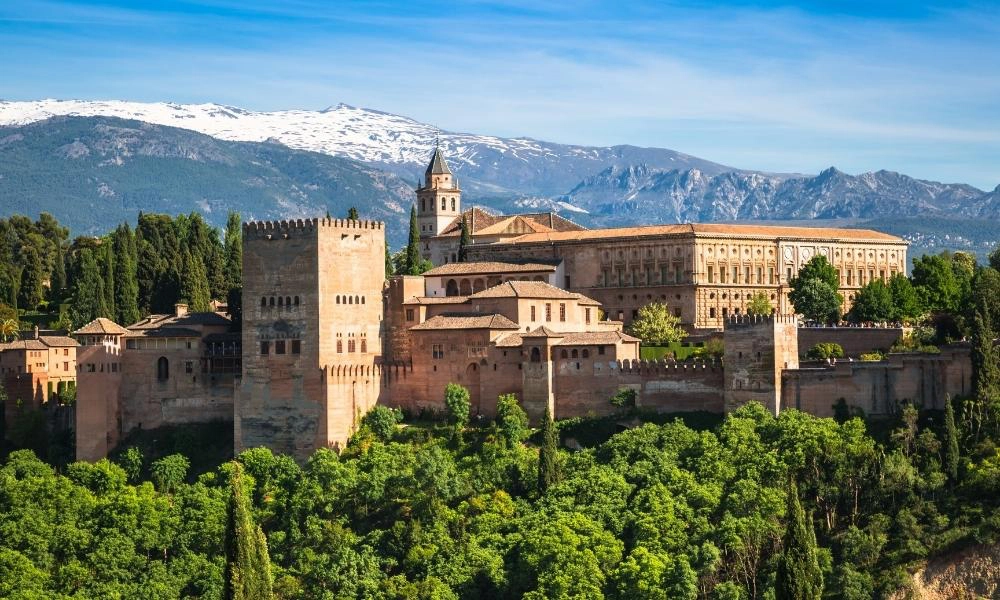
Nerja
If you’re making this a 14-day southern Spain itinerary, then you should have enough time to spend a few days at the beach at the end of your tour of Andalucia.
Make a detour from your Andalucia travel itinerary and take the gorgeous coastal route from Granada to Malaga along the Costa Tropical. Stop at Nerja and Torre del Mar for some of the best beaches in the region and a perfect end to your Andalucia holiday.
Where to Stay in Nerja
Upmarket: Stay at Parador de Nerja for its cliffside location overlooking the Mediterranean, direct beach access, and serene gardens perfect for soaking up Andalusian sunshine.
Mid-Range: Stay at Hotel Riu Monica for its seafront setting, comfortable modern rooms, and an easy stroll to Nerja’s lively town centre.
Budget: Stay at Hostal Marissal for its budget-friendly rates, cosy rooms, and unbeatable location right by the iconic Balcón de Europa.
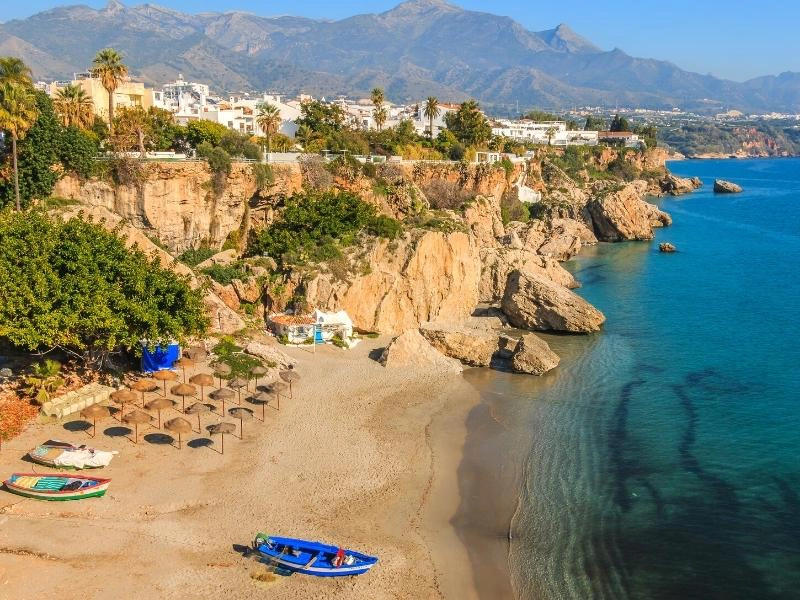
Andalucia Road Trip FAQs
How many days do you need for Andalucia?
A 7-day itinerary for southern Spain will allow you to get a taste of a few of the historical cities and spend a few days at the beach.
For a real flavour of the landscape, history and food, you need to spend at least 10 days in Andalucia. With a few extra days, you can also see some of Andalucia’s hidden gems and secret spots that fewer people visit, giving you a true taste of authentic Andalucia.
What is the best month to visit Andalucia?
Andalucia is best visited outside of the summer months. In June, July, and August, the temperatures are fierce and can be really uncomfortable – not the best time for a southern Spain itinerary!
Andalucia is one of the warmest places in mainland Europe in winter, although it won’t be quite warm enough for sea swimming. Evenings will be cooler, and you’ll need to pack layers if you’re planning on visiting in winter. There may be snow in the Sierra Nevada mountain range.
The shoulder seasons of spring and fall are both fantastic times to road trip Andalucia. Roads will be quieter, accommodation and flights cheaper, and you’ll still get all the atmosphere and culture of Andalucia, but with fewer people!
Spring, from March onwards, is gorgeous, with temperatures warming up and wildflowers appearing everywhere – the perfect time for a Spanish road trip!
If your plan is to hit the beach, May to July is the best time to visit, when you’ll avoid the summer heat and traffic but still have beautiful warm weather.
Fall, from September through to November, is also a perfect time for an Andalucia roadtrip in Europe’s best winter sun, with the warmth from summer lingering into autumn, but with quieter roads and cities.
Is driving in Andalucia easy?
Car travel in Spain is easy, with a good network of autovias (A) and autopistas (AP). The latter were toll roads until 2020 when many (but not all) became toll-free.
Car rental, fuel, and parking are some of the cheapest in Europe, making Spain a really cost-effective place to take a road trip.
Touring Spain by car in rural and mountainous areas can take longer than you think, although the standard of non-motorway roads in rural areas is generally good. Allow time to get off the beaten track and experience the real Spain on your Andalusia road trip.
Whether you’re driving your own vehicle to Spain or you’re in a rental car, follow our driving in Spain tips:
RELATED POST: Driving in Europe – Everything You Need to Know
Are you looking for more road trip inspiration? Check out these top posts…
European Road Trip: Six Countries in 90 Days
Norway Road Trip: Four Unmissable Routes
Germany Road Trip: 8 Unmissable Routes
The Ultimate Bucket List Italy Road Trip
Spring Road Trip from Britain to Portugal
Grand Tour of Switzerland: The Best Road Trip in Europe?
Love it? Pin it!
